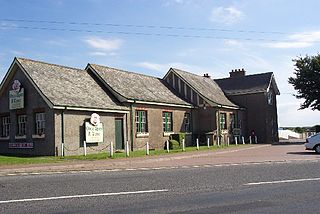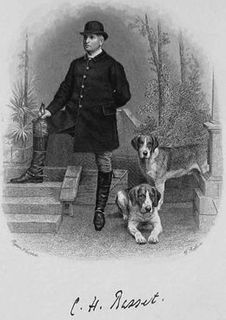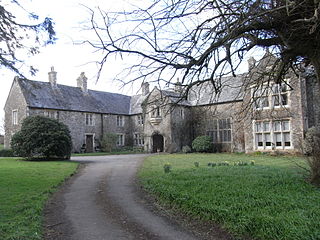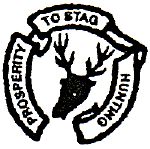
Ilfracombe is a seaside resort and civil parish on the North Devon coast, England, with a small harbour surrounded by cliffs.

North Devon is a local government district in Devon, England. North Devon Council is based in Barnstaple. Other towns and villages in the North Devon District include Braunton, Fremington, Ilfracombe, Instow, South Molton, Lynton and Lynmouth. The district was formed on 1 April 1974 as a merger of the Barnstaple municipal borough, the Ilfracombe and Lynton urban districts, and the Barnstaple and South Molton rural districts.

Braunton is a large village, civil parish, ecclesiastical parish and former manor in Devon. The village is situated 5 miles (8 km) west of Barnstaple. It is one of the largest villages in Devon with a population at the 2021 census of 10,217 people. There are two electoral wards. Their joint population at the above census was 8,218. Within the parish is the fertile, low-lying Braunton Great Field, which adjoins the undulating Braunton Burrows, the Core Area in North Devon Biosphere Reserve, the largest psammosere in England. It confronts the Atlantic Ocean at the west of the parish at the large beach of Saunton Sands, one of the South West's international-standard surfing beaches.

Mortehoe is a village and former manor on the north coast of Devon, England. It lies 10 miles north-west of Barnstaple, near Woolacombe and Lee Bay, and is sited in a valley within the hilly sand-dune-like land behind Morte Point, almost directly above Woolacombe. The parish population at the 2011 census was 1,637.

Bicton is a civil parish and a former manor in the East Devon district of Devon, England, near the town of Budleigh Salterton. The parish is surrounded, clockwise from the north, by the parishes of Colaton Raleigh, Otterton, East Budleigh and Woodbury. According to the 2001 census it had a population of 280. Much of the parish consists of Bicton Park, the historic home of the Rolle family, with Bicton Common, adjacent to Woodbury Common, in the west. The parish includes the village of Yettington on its southern border.

Bishop's Nympton is a village and civil parish in the North Devon district of Devon, England, about three miles east of South Molton. According to the 2001 census it had a population of 932. The electoral ward has the same name but covers the village and much of the land to the north-east. The ward population at the 2011 census was 1,911.

Bittadon is a civil parish and former manor in the North Devon district of Devon, England. According to the 2001 census the parish had a population of 45. It is about seven miles north of Barnstaple and is surrounded clockwise from the north by the parishes of Berrynarbor, Marwood and West Down.

Mortehoe and Woolacombe railway station was a station on the London and South Western Railway Ilfracombe Branch Line between Barnstaple and Ilfracombe in North Devon, England.

Heanton Punchardon ( ) is a village, civil parish and former manor, anciently part of Braunton Hundred. It is situated directly east-southeast of the village of Braunton, in North Devon. The parish lies on the north bank of the estuary of the River Taw and it is surrounded, clockwise from the north, by the parishes of Braunton, Marwood, Ashford and across the estuary, Fremington. The population was 418 in 1801 and 404 in 1901. Its largest localities are Wrafton and Chivenor. The surrounding area is also an electoral ward with a total population at the 2011 census of 2,673.

Watermouth Castle is a building in Watermouth, near Ilfracombe, North Devon, England, designed by George Wightwick as a residence for the Bassett family in the mid-19th century and is not a true castle but a country house built to resemble one. It has been designated as a Grade II* listed building.

Goodleigh is a village, civil parish and former manor in North Devon, England. The village lies about 2+1⁄2 miles (4 km) north-east of the historic centre of Barnstaple. Apart from one adjunct at the south, it is generally a linear settlement.

Swimbridge is a village, parish and former manor in Devon, England. It is situated 4 miles (6.4 km) south-east of Barnstaple and twinned with the town of St.Honorine Du Fay in Normandy, France. It was the home of the Rev. John "Jack" Russell who first bred the Jack Russell Terrier.

Charles Henry Williams of Pilton House and Westaway House, Pilton, near Barnstaple, and of Watermouth Castle all in North Devon, was a British naval and military officer, JP and Deputy Lieutenant for Devon, and a Conservative Party politician. He was a Member of Parliament (MP) for Barnstaple, 1868–1874. He was master of the Devon and Somerset Staghounds between 1887 and 1893.

Orleigh Court is a late medieval manor house in the parish of Buckland Brewer about 4 miles south-west of Bideford, North Devon, England. It is a two-storeyed building constructed from local slate stone and has a great hall with a hammer-beam roof, installed in the late 15th century.
Broadsands Beach is the marketing name given to a small cove located in Watermouth, originally known as Broadstrands Beach, North Devon. It is owned by Watermouth Valley Camping Park. It is accessed by 220 cliff steps from The Old Ilfracombe to Combe Martin Coast Road.

The red deer of Exmoor have been hunted since Norman times, when Exmoor was declared a Royal Forest. Collyns stated the earliest record of a pack of Staghounds on Exmoor was 1598. In 1803, the "North Devon Staghounds" became a subscription pack. In 1824/5 30 couples of hounds, the last of the true staghounds, were sold to a baron in Germany. Today, the Devon and Somerset is one of three staghounds packs in the UK, the others being the Quantock Staghounds and the Tiverton Staghounds. All packs hunt within Devon and Somerset. The Chairman as of 2016 is Tom Yandle, who was previously High Sheriff of Somerset in 1999.

Whitechapel is an ancient former manor within the parish of Bishops Nympton, in north Devon. It was the earliest known residence of the locally influential Bassett family until 1603. The core of the present manor house is late 16th or early 17th century, with later additions and alterations, and was classed as Grade I listed on 9 June 1952.

Shirwell is a village, civil parish and former manor in the local government district of North Devon, in the county of Devon, England. It was also formerly the name of a hundred of Devon. The village lies about 3.5 miles north-east of the town of Barnstaple, to the east of the A39 road to Lynton. The parish is surrounded clockwise from the north by the parishes of East Down, Arlington, Loxhore, Bratton Fleming, Goodleigh, Barnstaple, West Pilton and Marwood. In 2001 its population was 333, little changed from the 1901 figure of 338.
East Hagginton was a historic estate within the manor and parish of Berrynarbor near to the coast of North Devon. It is near to, if not actually encompassing, the site of Watermouth Castle.
The Manor of Heanton Punchardon was a manor in the parish of Heanton Punchardon, Devon, England.





















